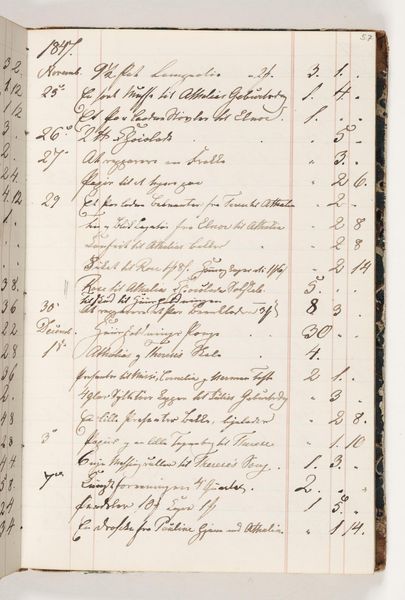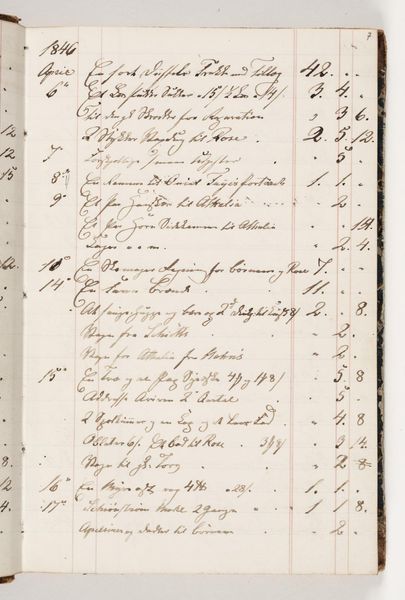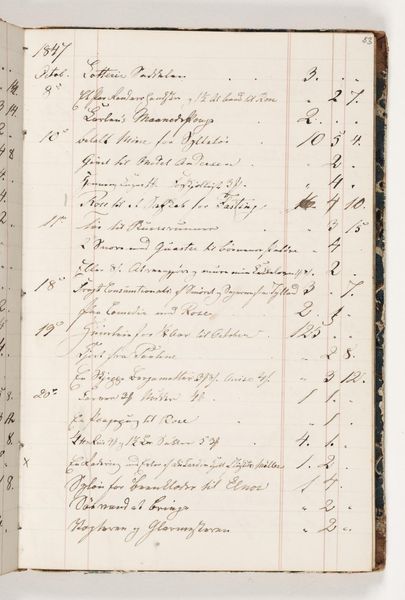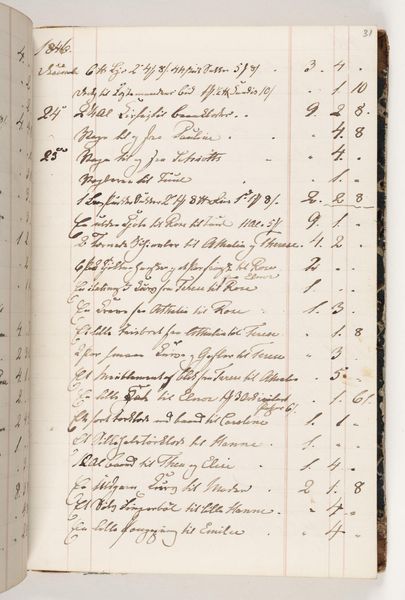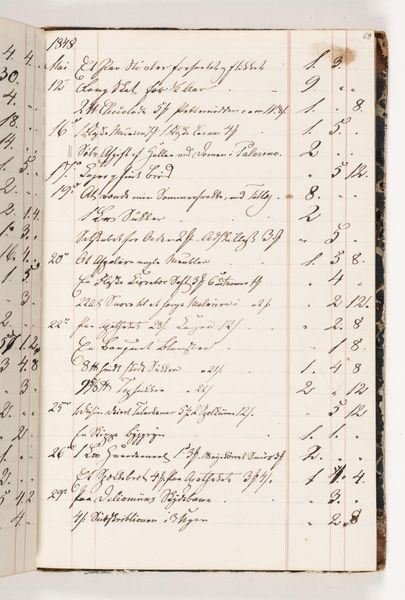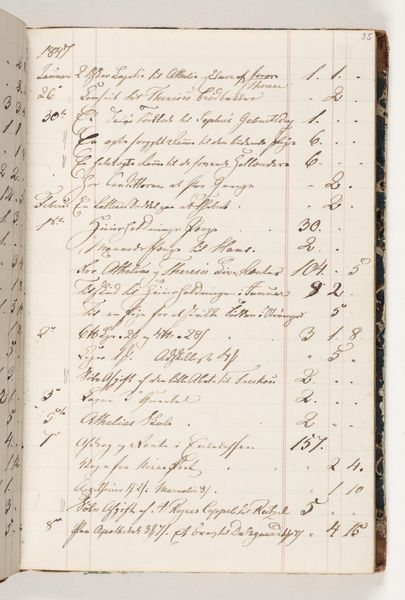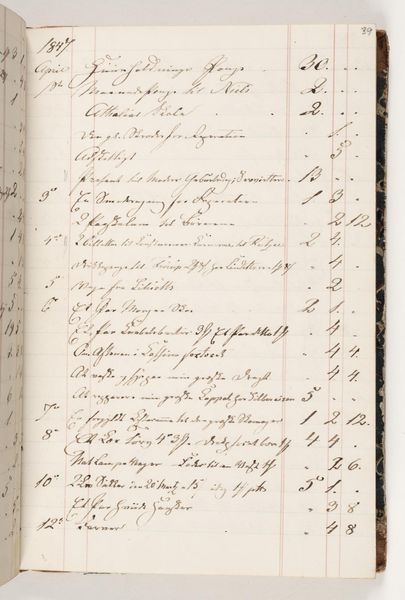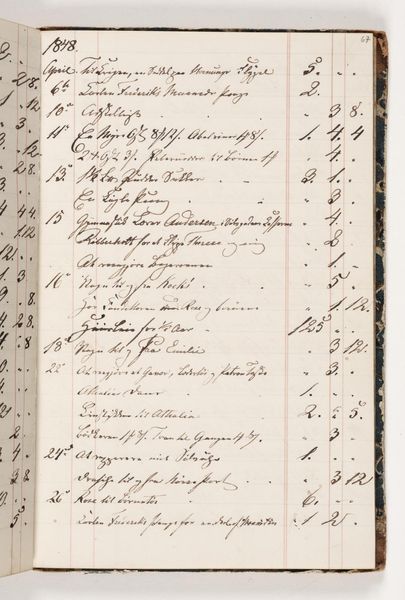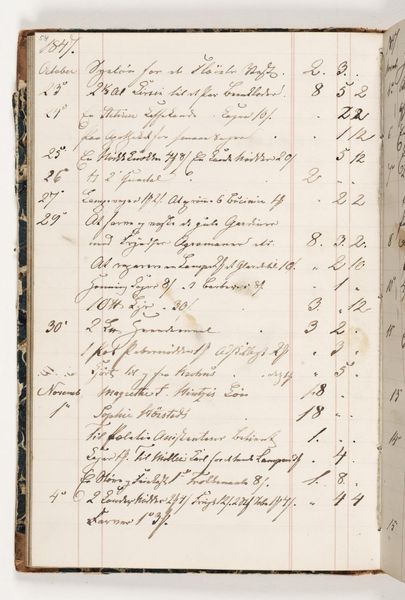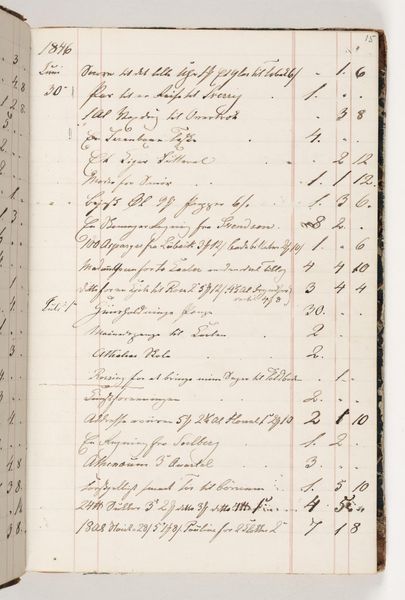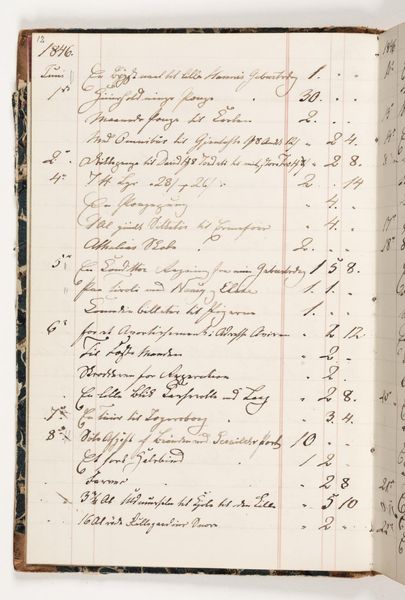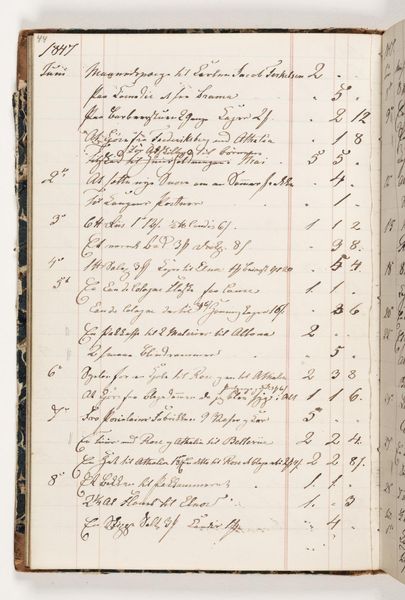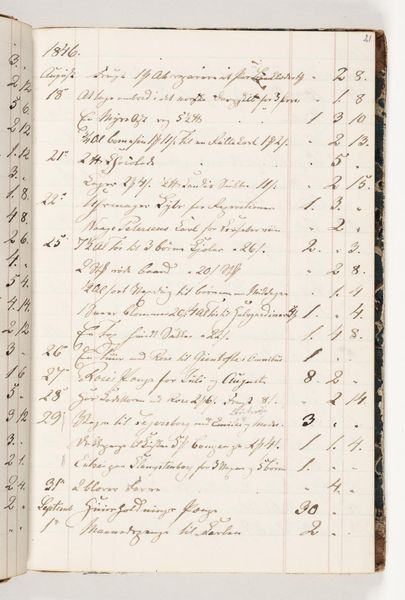
drawing, paper, ink
#
portrait
#
drawing
#
paper
#
ink
#
academic-art
Dimensions: 200 mm (height) x 130 mm (width) (bladmaal)
This is Martinus Rørbye’s “Regnskab 1847”, a page from an account book inscribed with careful handwriting, made in 1847. The dominant visual symbol here is the script itself. Writing, at its heart, is a system of symbols representing spoken language. Consider how the act of writing has been imbued with power and mystique across cultures. In ancient Egypt, hieroglyphs were not merely a form of writing but sacred symbols believed to possess magical properties. Similarly, the written word in religious texts has often been regarded as divine and authoritative. Even in our modern age, the act of recording and documenting carries a certain weight. Think of legal contracts, personal diaries, or historical archives. They are all imbued with the power to preserve memory and knowledge. The aesthetic quality of the handwriting also affects us subconsciously. The uniformity and consistency of the script convey a sense of order, precision, and control. This order can be interpreted as a reflection of the artist's mind and the values of the society he inhabited. Through its meticulous execution and its connection to historical forms of symbolic communication, the script in Rørbye’s account book resonates with us on a deep, subconscious level. The act of writing has resurfaced and evolved through time, taking on new meanings in different historical contexts.
Comments
No comments
Be the first to comment and join the conversation on the ultimate creative platform.
